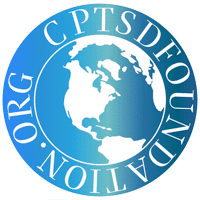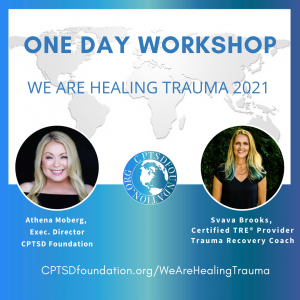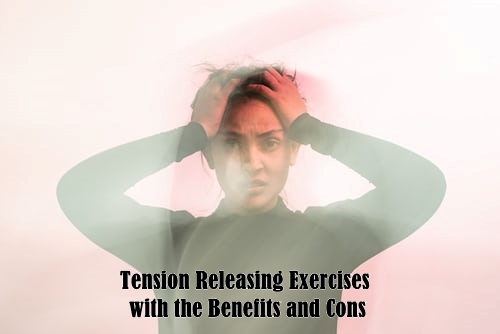In August, my articles have been centered around Tension & Trauma Release Exercises (TRE ®) and how they can aid in self-regulation and the treatment of trauma. We discovered that TRE ® is life-changing if done correctly and with a tension-releasing exercise practitioner.
In this article, we shall recount former posts about TRE ® and explore together the benefits and challenges of this unusual form of treatment for post-traumatic stress disorder (PTSD) and complex post-traumatic stress disorder.
A Recap: What are Tension & Trauma Release Exercises?

Trauma and stress are stored in our bodies, causing us physical pain and emotional distress. Tension-releasing exercises, created by Doctor David Berceli, are new and innovative methods using vibrating and shaking of the body to release deep muscular patterns of stress, tension, and trauma.
Through observations done in the Middle East and Africa, Doctor Berceli witnessed many people who had been traumatized by war and discovered that by using the body’s natural tremoring mechanism, one could release the harmful after-effects of trauma and stress
TRE ® has been used to support and treat United States war veterans and is found to reduce the need for drugs or psychotherapy to control PTSD symptoms. Tension releasing exercises have gone viral and, although not yet accepted by all physicians and mental health professionals due to lack of research, TRE® continues to grow.
Traumatic Stress, Neuroplasticity, and TRE®
Traumatic stress is where a survivor’s resources are lost or threatened beyond their capability to defend themselves against threats or to recover from losses (Aspinwall & Taylor, 1997). This means that when a person is overwhelmed by a threat where they cannot protect themselves, their bodies store away the event and remember it. All our stress responses, such as racing heart and tensed muscles, are remembered, and these sensations may rise again as panic attacks, PTSD, or CPTSD.
Below are only a few adverse events that can occur in either children or adults that are remembered by our bodies afterward:
- Sexual or physical abuse or assault
- Exposure to combat or war zone
- An unexpected death
- House fires
- Severe medical events
- Witnessing death
- Domestic violence
- Mass violence
- Terrorism
Because traumatic stress is stored in the body, it can become hazardous to one’s health and make life miserable for a lifetime if not treated.
However, all is not lost. Our brains are remarkable organs and can change with time. This function is known as neuroplasticity and refers to the brain’s remarkable ability to adapt. Neuroplasticity is necessary to cope with the aftermath of trauma. Our brain’s ability to adapt is formed during childhood and is embedded in neural pathways functioning outside of our conscious awareness.
When traumatic stress overwhelms a child, their brain responds by pushing the memory of the event into the body to escape in their mind. Often the memories will resurface and intrude into the present when they have become adults presenting as unsettling thoughts, emotions, sensory memories, body memories, or flashbacks. These adult survivors associate self-protection to triggers today, and their survival strategies, such as dissociation, are activated.
To overcome our body’s response to stress and its aftermath, TRE® utilizes muscle stretch reflexes, voluntary contraction of muscles induced by quick stretches, and tremoring to release tension and stress.
Tension Releasing Exercises, Trauma and Self-Regulation

We touched on self-regulation some already, but the primary purpose of TRE® is to help one regulate their emotions. Emotional regulation is one’s ability to respond to ongoing demands from experiences that are anything from socially tolerable emotions to spontaneous and inappropriate reactions.
Emotional regulation involves a complex process involving modulating, inhibiting, or initiating a behavior for a particular situation. Emotional regulation is also the process of focusing one’s attention on a task and using one’s ability to suppress inappropriate behavior.
Trauma interrupts the development of self-regulation by affecting how our brain functions due to neurological changes caused by the release of cortisol, a hormone that readies us for the fight or flight response. Survivors of severe abuse often have amygdalae and hippocampi that are not the right size but are smaller than average.
The brain that is or has been experiencing trauma will change to protect itself from the stress from that trauma. The brain will turn off some of its functions, and others will be put on red alert. These changes of function in the brain cause survivors, be they children or adults, to have problems regulating their emotions, and they become impulsive leading to fewer healthy relationships and a sharp increase in the incidence of illness.
Lack of self-regulation causes survivors to react poorly to ordinary events as they become extraordinarily difficult.
The Benefits of Tension Releasing Exercises
Tension-releasing exercises, when done correctly, can have many benefits to both mind and body. According to TRE® for All, Inc., these benefits include the following:
- Less Worry & Anxiety
- Reduces Symptoms of PTSD
- More Energy & Endurance
- Improved Marital Relationships
- Less Workplace Stress
- Better Sleep
- Less Relationship Conflict
- Reduced Muscle & Back Pain
- Increased Flexibility
- Greater Emotional Resiliency
- Decreases Symptoms of Vicarious Trauma
- Healing of Old Injuries
- Lessened Anxiety surrounding Serious Illness
- Relief from Chronic Medical Conditions
The research is still out on the exact mechanisms of TRE® and how it causes and can maintain improvements and increase self-regulation.
What are the Challenges of TRE®?

TRE® is an effective and safe stress release technique for most people who experience them. However, to learn and accomplish their most significant value, it is vital to do them, at least at the onset, with a Certified TRE® Provider. It is recommended that people using tension-releasing exercises practice consistently to sustain benefits over time.
All that having been said, there is one challenge to doing tension releasing exercises involving survivors of complex trauma. The literature on the TRE® for All, Incorporated website states that “It is imperative that persons with any clinical diagnoses or psychiatric conditions, or persons taking medications for any diagnoses or conditions, consult their medical professional or a Certified TRE Provider* to ensure they learn TRE self-regulation appropriately and correctly.”
There is an excellent reason for this advice.
Because tension-releasing exercises involve tightly held muscles, emotions that have been buried might spring back to consciousness. Some of the emotions that surface may be strong, while others report experiencing dissociated or panicked.
It is offered that if you experience intense emotions while performing TRE® to be respectful of the process, and if you begin to feel sensitive, scared, or overwhelmed, you should stop the exercises, straighten your legs, and lock your knees. Remaining in this position for a few minutes will help ground you back to the present. You can also curl up in a ball, walk around or eat something to bring you back to the here and now.
References
Berceli D. Evaluating the effects of stress reduction exercises employing mild tremors: a pilot study [dissertation]. Phoenix (AZ): Arizona State University; 2009.
TRE® for All, Inc. Retrieved from: https://traumaprevention.com/frequently-asked-questions/
What is emotional regulation? (2020). Mightier.com. Retrieved from: https://www.mightier.com/articles/what-is-emotional-regulation/

Have you registered for We Are Healing Trauma 2021?

CPTSD Awareness Day is September 2, and you can get lifetime access to our workshop featuring Svava Brooks!
We are excited to offer Svava Brooks as she offers her insight and encouragement on your healing journey from complex trauma.
Join us and register for lifetime access to her interview of CPTSD Awareness Day 2021!
As always, If you or a loved one live in the despair and isolation that comes with complex post-traumatic stress disorder, please, come to us for help. CPTSD Foundation offers a wide range of services, including:
- Daily Calls
- The Healing Book Club
- Support Groups
- Our Blog
- The Trauma-Informed Newsletter
- Daily Encouragement Texts
All our services are reasonably priced, and some are even free. So, to gain more insight into how complex post-traumatic stress disorder is altering your life and how you can overcome it, sign-up; we will be glad to help you. If you cannot afford to pay, go to www.cptsdfoundation.org/scholarship to apply for aid. We only wish to serve you.

My name is Shirley Davis and I am a freelance writer with over 40-years- experience writing short stories and poetry. Living as I do among the corn and bean fields of Illinois (USA), working from home using the Internet has become the best way to communicate with the world. My interests are wide and varied. I love any kind of science and read several research papers per week to satisfy my curiosity. I have earned an Associate Degree in Psychology and enjoy writing books on the subjects that most interest me.

